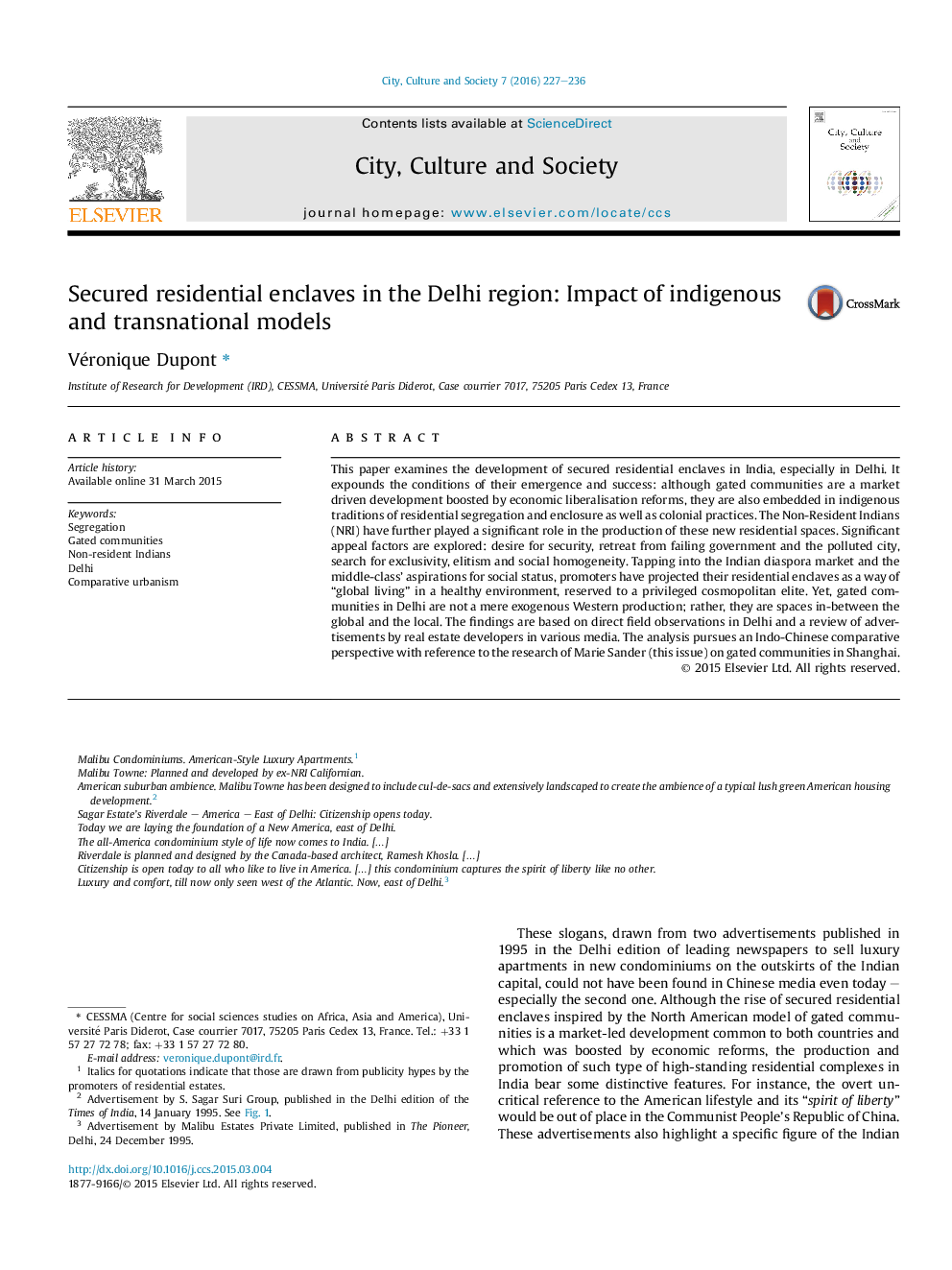| Article ID | Journal | Published Year | Pages | File Type |
|---|---|---|---|---|
| 5048166 | City, Culture and Society | 2016 | 10 Pages |
â¢Secured residential enclaves in Indian metros are not a mere exogenous western production.â¢They are a market driven development boosted by economic liberalisation reforms.â¢They are embedded in indigenous traditions of residential segregation and enclosure as well as colonial practices.â¢Non-Resident Indians have played a significant role in the production of gated communities.â¢Appeal factors are good investment, desire for security and elitism, retreat from failing government and polluted city.
This paper examines the development of secured residential enclaves in India, especially in Delhi. It expounds the conditions of their emergence and success: although gated communities are a market driven development boosted by economic liberalisation reforms, they are also embedded in indigenous traditions of residential segregation and enclosure as well as colonial practices. The Non-Resident Indians (NRI) have further played a significant role in the production of these new residential spaces. Significant appeal factors are explored: desire for security, retreat from failing government and the polluted city, search for exclusivity, elitism and social homogeneity. Tapping into the Indian diaspora market and the middle-class' aspirations for social status, promoters have projected their residential enclaves as a way of “global living” in a healthy environment, reserved to a privileged cosmopolitan elite. Yet, gated communities in Delhi are not a mere exogenous Western production; rather, they are spaces in-between the global and the local. The findings are based on direct field observations in Delhi and a review of advertisements by real estate developers in various media. The analysis pursues an Indo-Chinese comparative perspective with reference to the research of Marie Sander (this issue) on gated communities in Shanghai.
